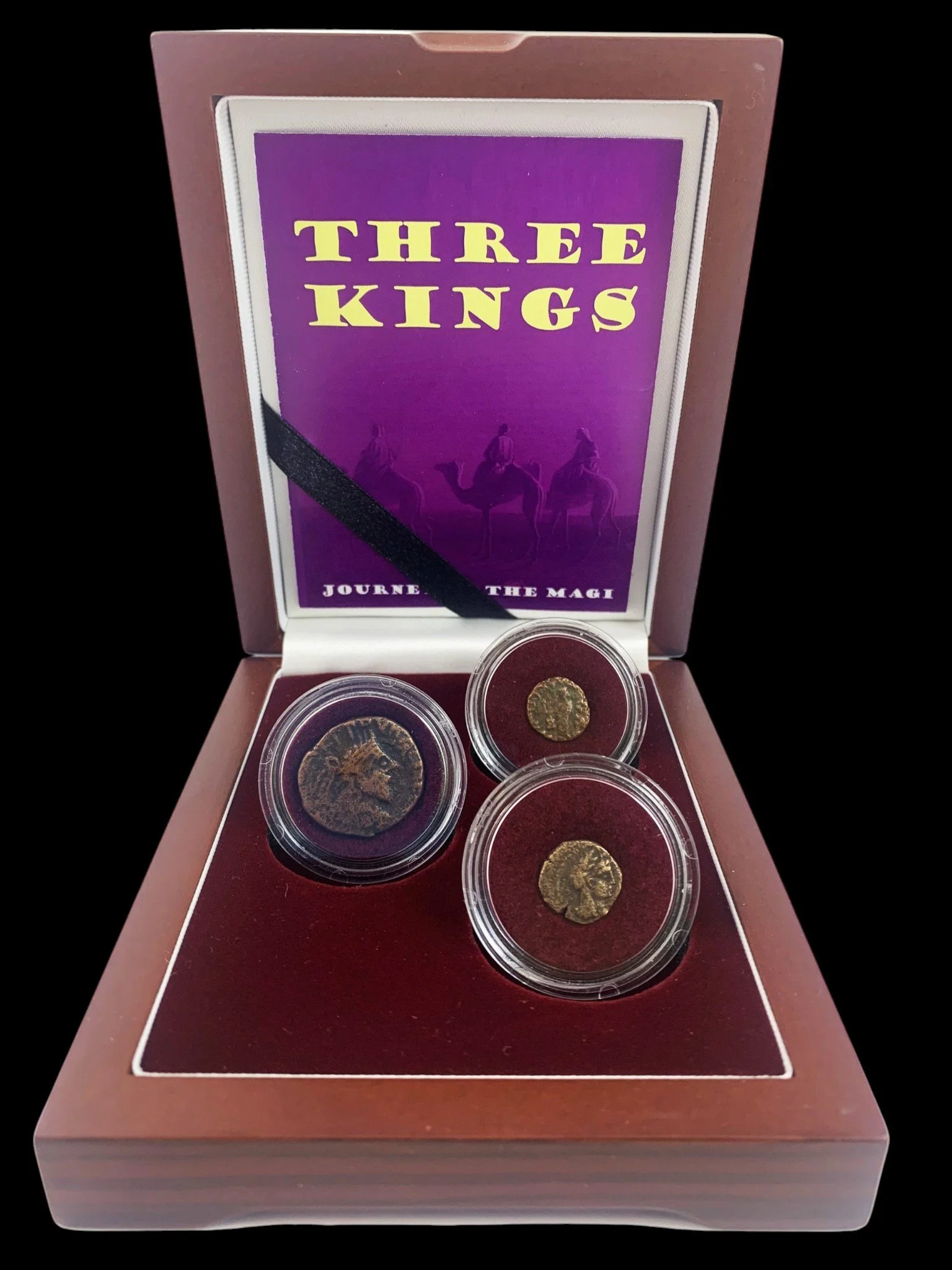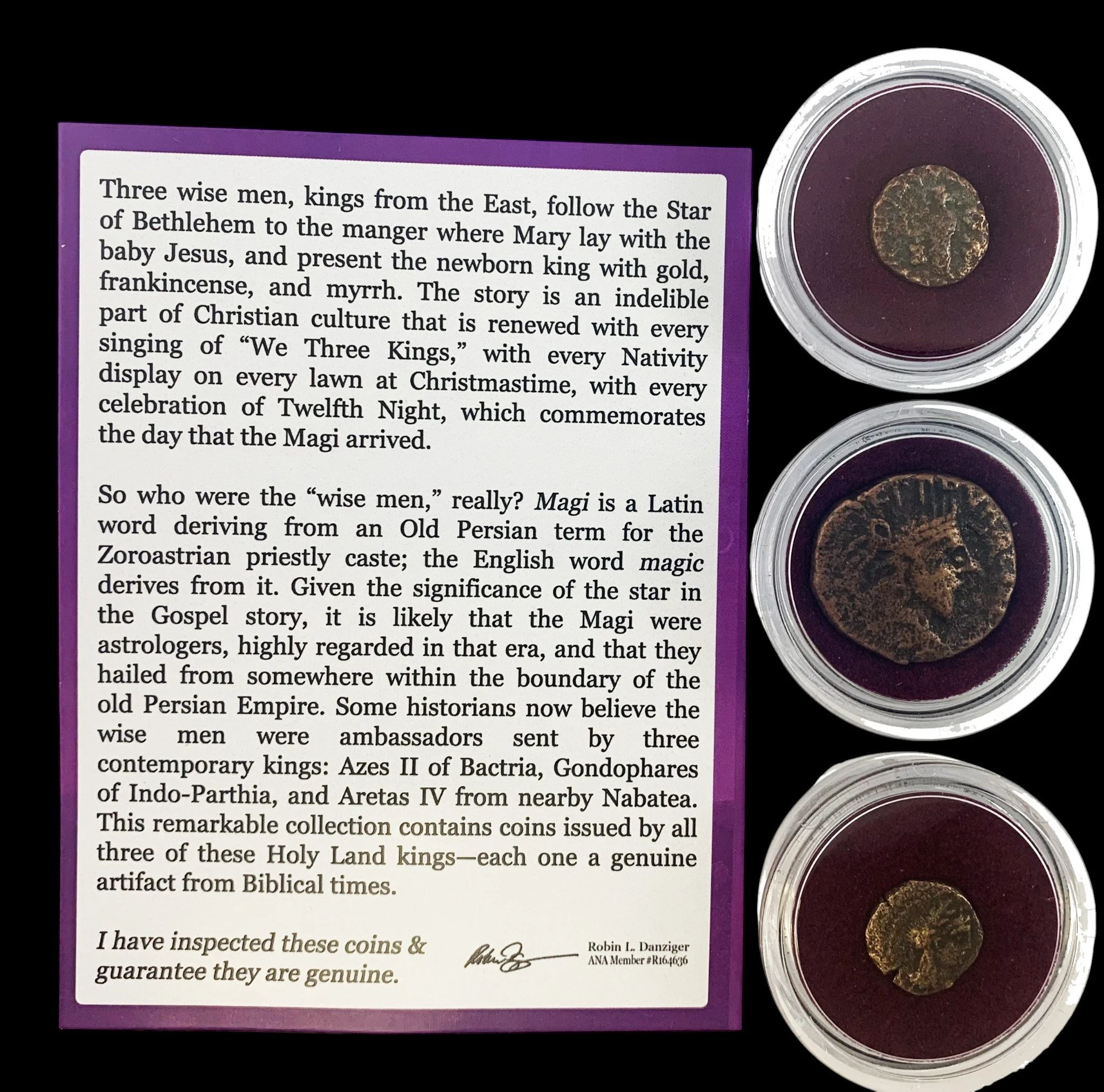 Image 1 of 3
Image 1 of 3

 Image 2 of 3
Image 2 of 3

 Image 3 of 3
Image 3 of 3




Trials of St. Paul: Two Ancient Bronze Coins (about 1970-1960 years ago)
This remarkable collection features two bronze prutahs from Roman Judaea during the critical period when St. Paul faced trial and imprisonment, as documented in the Acts of the Apostles.
1. Bronze Prutah of Antonius Felix (about 1970-1965 years ago)
This small bronze coin was issued under the authority of Antonius Felix, the Roman procurator of Judaea who imprisoned Paul as described in the biblical account.
Coin Description:
Front side: Likely shows two crossed palm branches or shields with the name of Emperor Nero and Felix
Back side: Probably depicts a palm tree (symbol of Judaea) with inscription mentioning "Caesar"
Technical Details:
Bronze composition
Prutah denomination
Date/period: Circa 52-59 CE
Historical Significance: Antonius Felix was the Roman governor who held Paul in prison for two years in Caesarea (modern Israel). According to Acts 24, Paul was brought before Felix but was kept in custody as the governor hoped for a bribe. These small bronze coins were the everyday currency used throughout Judaea during Paul's ministry and would have been handled by ordinary people and Roman officials alike.
2. Bronze Prutah of Porcius Festus (about 1965-1960 years ago)
This bronze coin was minted under the authority of Porcius Festus, the Roman governor who succeeded Felix and sent Paul to Rome.
Coin Description:
Front side: Likely features a palm branch or other imperial symbols with Latin inscription
Back side: Probably shows a palm tree with inscription mentioning Emperor Nero
Technical Details:
Bronze composition
Prutah denomination
Date/period: Circa 59-62 CE
Historical Significance: Porcius Festus succeeded Felix as the Roman procurator of Judaea. When he assumed office, he inherited the case of Paul's imprisonment. According to Acts 25-26, Festus heard Paul's defense but, when Paul appealed to Caesar as his right as a Roman citizen, Festus sent him to Rome. These coins circulated in Judaea during a time of increasing tensions between Rome and the Jewish population, just a few years before the outbreak of the First Jewish Revolt in 66 CE.
This remarkable collection features two bronze prutahs from Roman Judaea during the critical period when St. Paul faced trial and imprisonment, as documented in the Acts of the Apostles.
1. Bronze Prutah of Antonius Felix (about 1970-1965 years ago)
This small bronze coin was issued under the authority of Antonius Felix, the Roman procurator of Judaea who imprisoned Paul as described in the biblical account.
Coin Description:
Front side: Likely shows two crossed palm branches or shields with the name of Emperor Nero and Felix
Back side: Probably depicts a palm tree (symbol of Judaea) with inscription mentioning "Caesar"
Technical Details:
Bronze composition
Prutah denomination
Date/period: Circa 52-59 CE
Historical Significance: Antonius Felix was the Roman governor who held Paul in prison for two years in Caesarea (modern Israel). According to Acts 24, Paul was brought before Felix but was kept in custody as the governor hoped for a bribe. These small bronze coins were the everyday currency used throughout Judaea during Paul's ministry and would have been handled by ordinary people and Roman officials alike.
2. Bronze Prutah of Porcius Festus (about 1965-1960 years ago)
This bronze coin was minted under the authority of Porcius Festus, the Roman governor who succeeded Felix and sent Paul to Rome.
Coin Description:
Front side: Likely features a palm branch or other imperial symbols with Latin inscription
Back side: Probably shows a palm tree with inscription mentioning Emperor Nero
Technical Details:
Bronze composition
Prutah denomination
Date/period: Circa 59-62 CE
Historical Significance: Porcius Festus succeeded Felix as the Roman procurator of Judaea. When he assumed office, he inherited the case of Paul's imprisonment. According to Acts 25-26, Festus heard Paul's defense but, when Paul appealed to Caesar as his right as a Roman citizen, Festus sent him to Rome. These coins circulated in Judaea during a time of increasing tensions between Rome and the Jewish population, just a few years before the outbreak of the First Jewish Revolt in 66 CE.





















